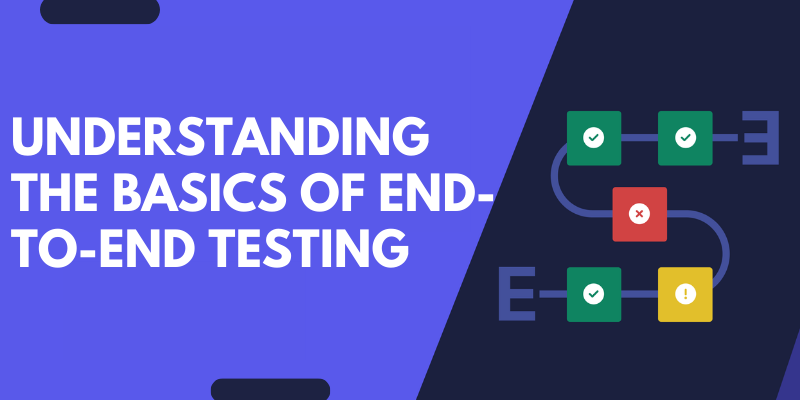One of the top priorities for any software company is to provide high-quality software with unique and new features. However, no organization can guarantee these for its clients unless the software and its components are tested under various conditions. There are numerous testing approaches, each serving a distinct role in the software development life cycle. End-to-end testing (E2E) is a popular testing technique among developers and testers alike. In this blog will be A Comprehensive Guide to Understanding the Basics of End-to-End Testing. To know more about End-to-End Testing, You can go for a Software Testing Training in Chennai and build a robust skill-set working with the most powerful tools and technologies to boost your big data skills.
What is End-to-End Testing?
It is a method for testing a program from start to finish, including its dependencies. A real-world user scenario is reproduced, and the application of tested from the perspective of the end user. The goal is to determine whether the application behaves as intended and whether the integrity of the various system components is preserved. If any of these sub-components fails, the entire system fails. This is a significant risk in software development that can be avoided by using this testing procedure.
End-to-End Testing Process
This testing can be done in two ways: vertically or horizontally. Horizontal testing is more prevalent and widely used. Vertical testing is performed when important components of a sophisticated computing system that do not involve users or interfaces must be tested. Both varieties assist you achieve the same goal, but each has its own set of qualifications and benefits.
Horizontal End-to-End Testing
Horizontal testing is conducted from the end-user’s point of view. It determines if the user can browse the software and perform its functionalities as planned. It also aids in the detection of any defects or exceptions that hinder the user from using the software’s various features as planned.
Vertical End-to-End Testing
Vertical testing is performed in layers or levels (data layer, integration layer,business layer, and presentation layer), implying that the tests are performed either hierarchically or sequentially. To assure quality, each system subcomponent is examined from start to finish. It is usually done when the system does not have a UI or when the UI has a high level of complexity. Enroll in Software Testing Training in Chennai to boost your career by gaining the most in-demand skills in the market.
End-to-End Testing Frameworks
End-to-end testing frameworks are used to guarantee that all of an application’s moving pieces are properly configured. Here are a few of the more popular ones:
Selenium
Selenium is one of the most well-known and commonly used E2E testing frameworks. It’s a collection of tools and packages for several programming languages. This functionality benefits the testing community by allowing them to test the software in the language in which they are most comfortable.
Testim
Many testers prefer Testim because it is a simple yet sophisticated framework. It has a very simple user interface and runs tests using complicated algorithms and AI. Testim can be used to test complicated dynamic applications utilizing AI when other frameworks fail. It supports parallel execution as well as interoperability with other frameworks.
Cucumber
Cucumber constant on behavior-driven development (BDD) and allows you to test the product from the standpoint of many stakeholders. Its appeal stems primarily from the fact that it employs Gherkin, which is quite comparable to writing code in English. Cucumber is the solution for folks who dislike using difficult programming languages. This functionality also enables non-technical users to create and comprehend test scripts.
Benefits of End-to-End Testing
Reduced Risks
End-to-end testing is performed on the application after each iteration or sprint. This considerably minimizes the likelihood of future dangers.
Increased Confidence
The application’s functionality and performance are extensively verified at each tier. Because this testing is done from the user’s point of view, it boosts confidence in the application’s readiness for public release.
Finally, you enjoyed this blog and now understand everything about End-to-End Testing, including Understanding the Basics of End-to-End Testing. Advanced Training Institute in Chennai will help you grasp the testing concepts and learn real time applications with case studies and hands-on exercises.
Also check: Software Testing Interview Questions and Answers

